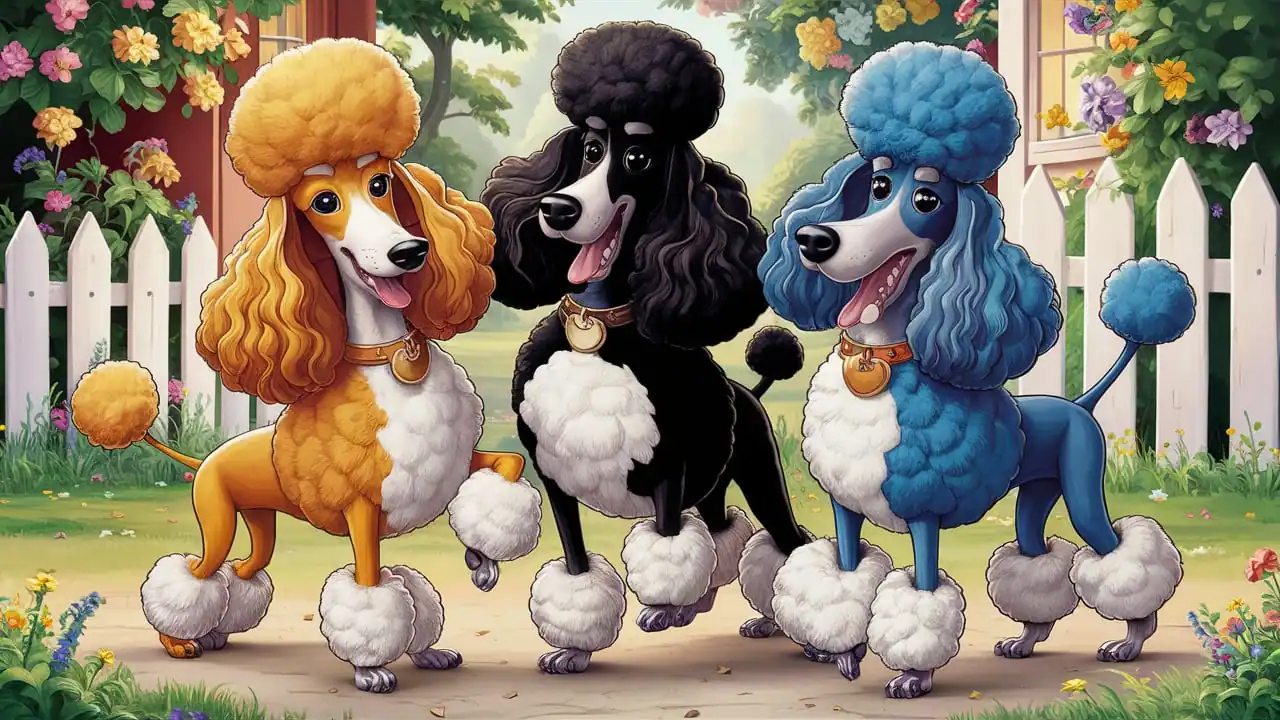Corded Poodles are a fascinating variation of the Poodle breed, known for their distinctive rope-like coats. Unlike the more common curly or clipped Poodles, corded Poodles have coats that form long, tight cords, giving them a unique and striking appearance. This guide will explore their history, characteristics, grooming needs, and health considerations to help you understand these remarkable dogs better.
Introduction to Corded Poodles
Corded Poodles are not a separate breed but a grooming style applied to standard Poodles. The cords form naturally when the curly hair mats and is carefully separated into sections. This style requires dedication and proper maintenance but results in a stunning and elegant look.
Historical Background
The practice of cording Poodles dates back to the 19th century. In 1886, the Poodle Club of England recognized corded coats in their breed standards, describing them as “hanging in tight, even cords.” Corded Poodles were once popular in dog shows, with famous examples like “Achilles,” a top-winning corded Poodle in England. However, the time-consuming grooming process led to a decline in their popularity over time.
Learn more about the evolutionary history of poodles from our experts.
Characteristics of Corded Poodles
- 🔹 Appearance: Besides their corded coats, these Poodles have the same physical traits as standard Poodles: a well-proportioned body, alert expression, and graceful movement.
- 📏 Size: Corded Poodles come in Standard, Miniature, and Toy sizes, with Standards being the most common due to their larger coat area.
- 💕 Temperament: Known for their intelligence, friendliness, and active nature, corded Poodles make excellent companions.
Grooming & Maintenance Of Corded Poodles
Maintaining a corded coat requires dedication:
- ✂️ Initiation: The cording process begins by allowing the Poodle’s curly hair to mat naturally. These mats are then separated manually into sections to form cords.
- 🛁 Maintenance: Regular bathing is essential. After washing, thorough drying is crucial to prevent mildew. Owners must regularly monitor and separate the cords to maintain their form.
- ⚠️ Challenges: The corded coat is harder to keep clean than a traditional curly coat. Owners must invest time and effort in regular maintenance.
Learn What Are the Corded Breeds and Why Are Their Coats Like That?
Health Considerations
While Poodles are generally healthy, corded coats introduce specific considerations:
- 🚩 Skin Health: Dense cords can trap moisture and debris, leading to skin issues if not properly maintained.
- ⚖️ Weight: Wet cords can become heavy, which may cause discomfort if not dried properly.
- 🏃 Activity Level: Owners should ensure cords do not impede movement or become tangled during activities.
Corded Poodles in Modern Times
Corded Poodles are rare today. The intricate grooming process and the rise of more manageable styles have contributed to their decline. However, enthusiasts appreciate corded Poodles for their historical significance and unique look. They still participate in dog shows but are seldom seen compared to their curly-coated counterparts.
Conclusion
Corded Poodles are a rare and captivating variation of the Poodle breed, celebrated for their distinctive rope-like coats and historical charm. While their grooming demands are high, the result is a stunning, unique appearance that sets them apart. Whether you’re a Poodle enthusiast or a potential owner, understanding the care, history, and characteristics of corded Poodles will help you appreciate their beauty and significance in the canine world.
Frequently Asked Questions
1. Are corded Poodles a separate breed?
No, they are standard Poodles groomed with a corded coat style.
2. Is cording suitable for all Poodle sizes?
Yes, but it’s most common in Standard Poodles due to their larger coat area.
3. How long does it take to form cords?
It can take several months for the cords to fully form and mature.
